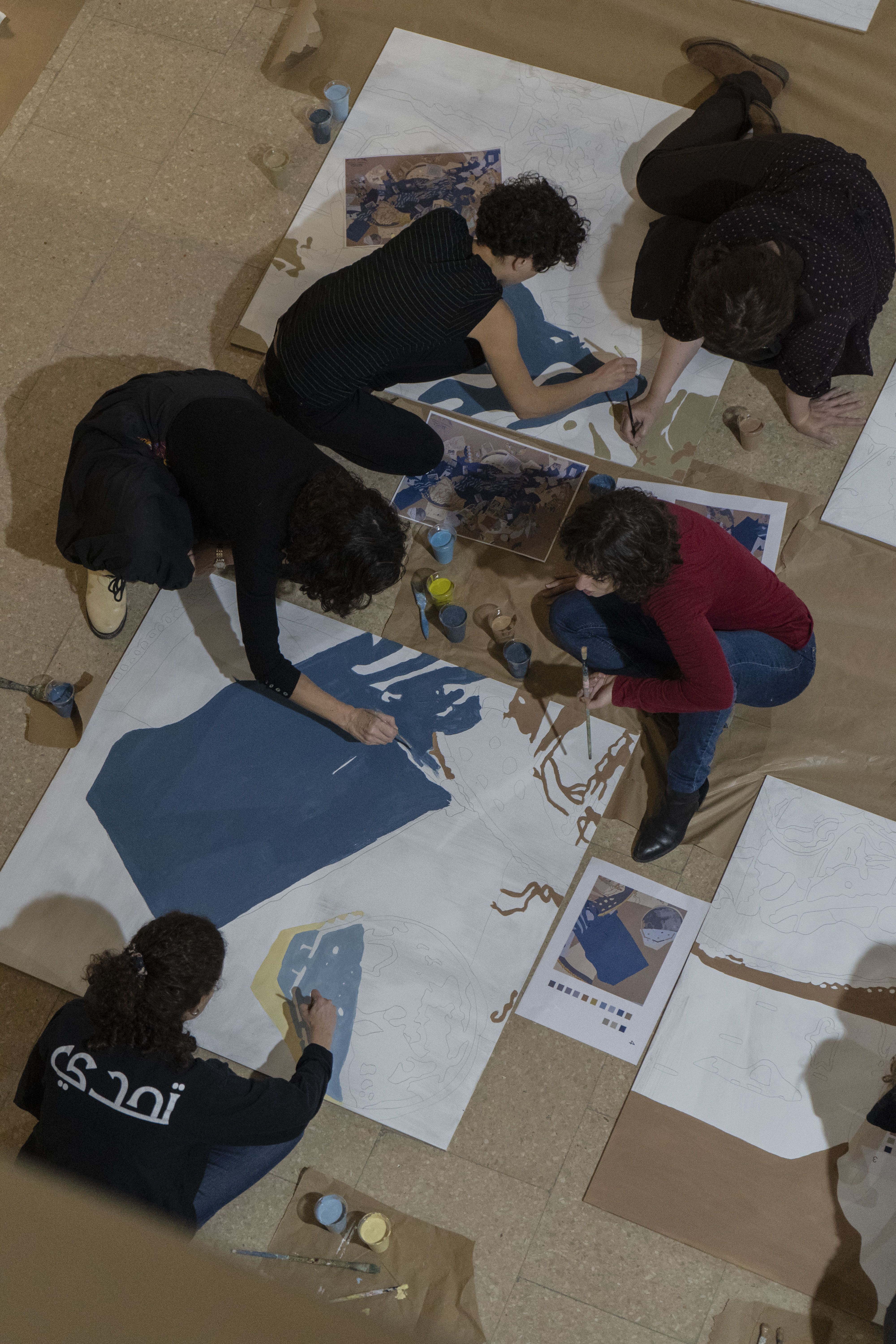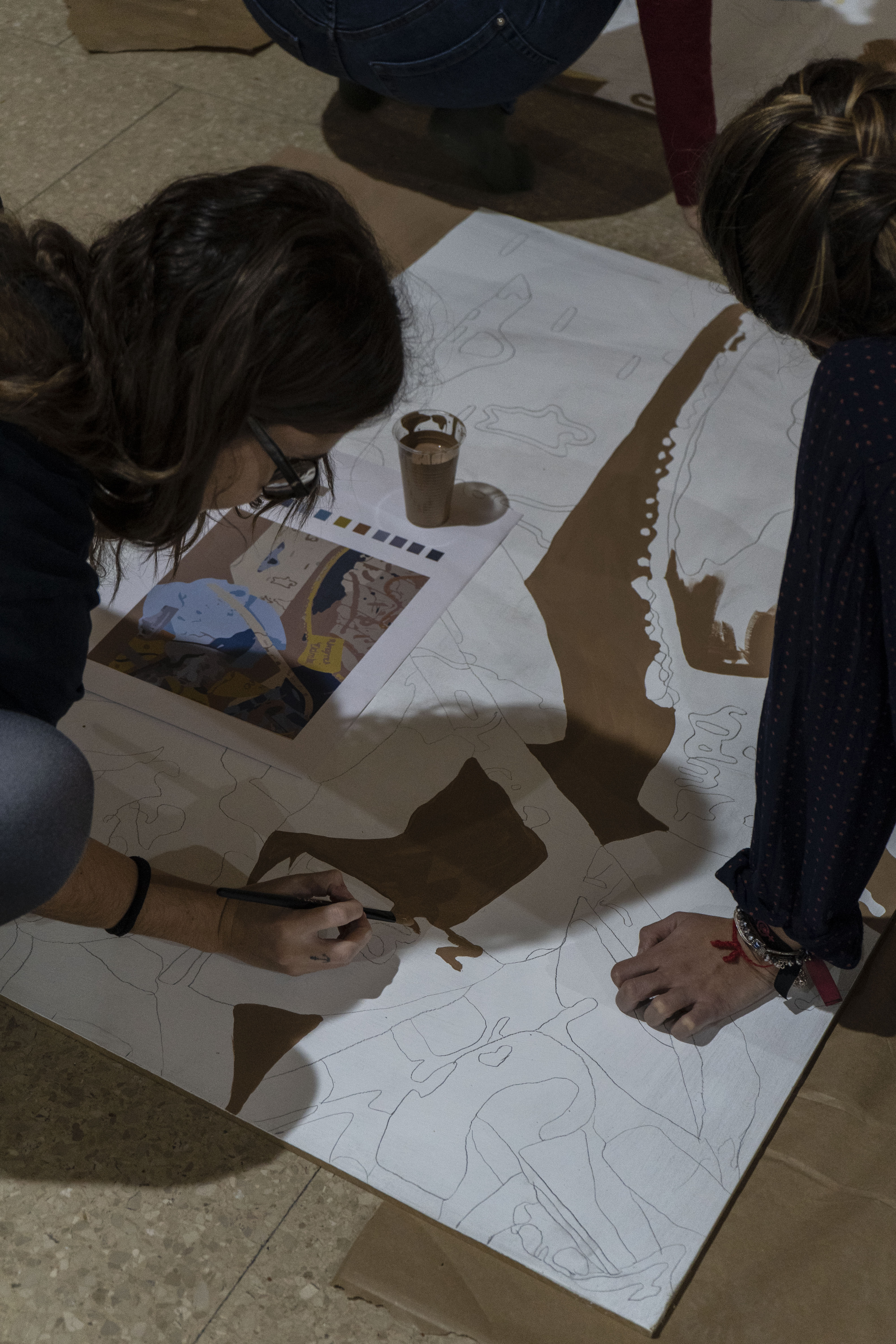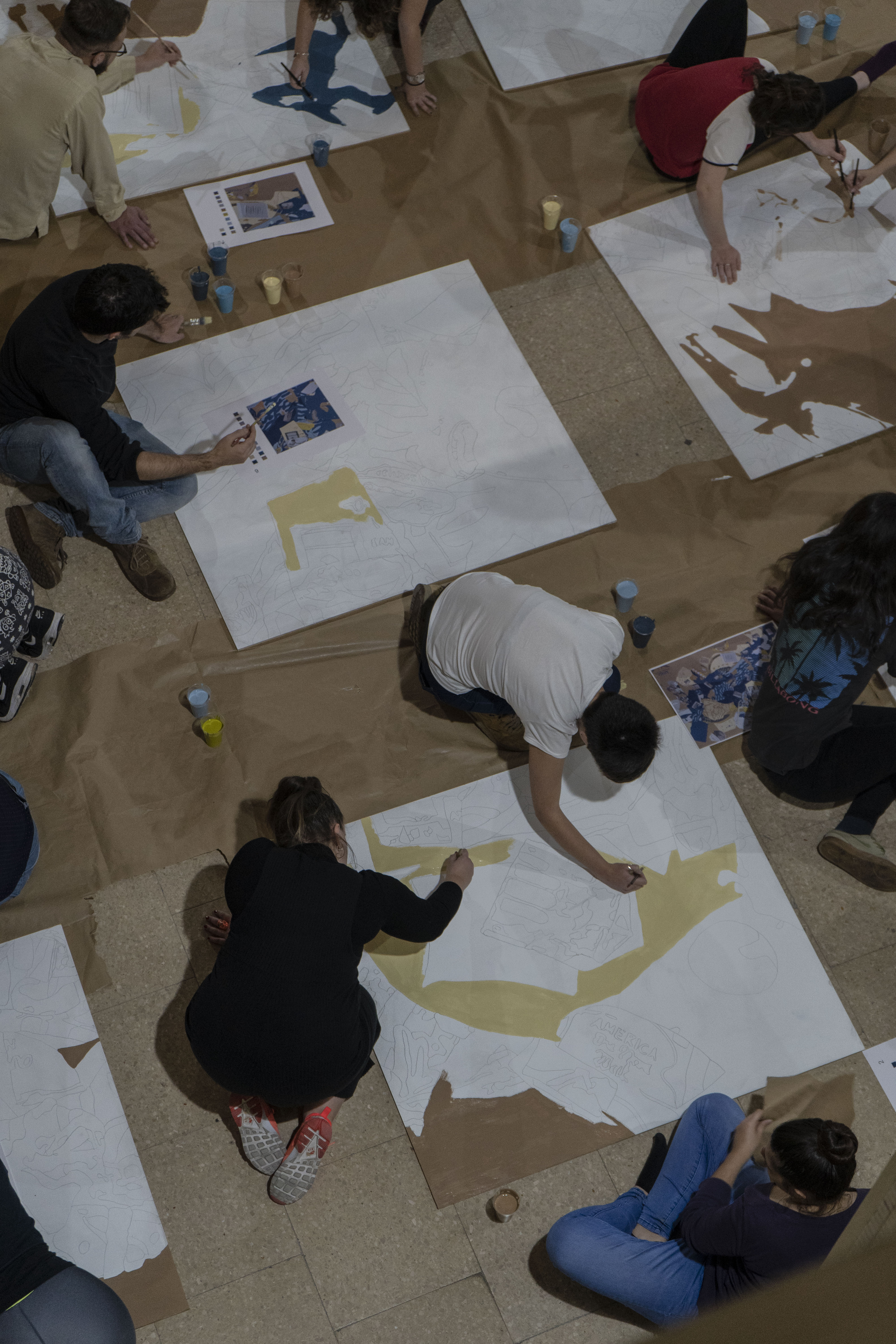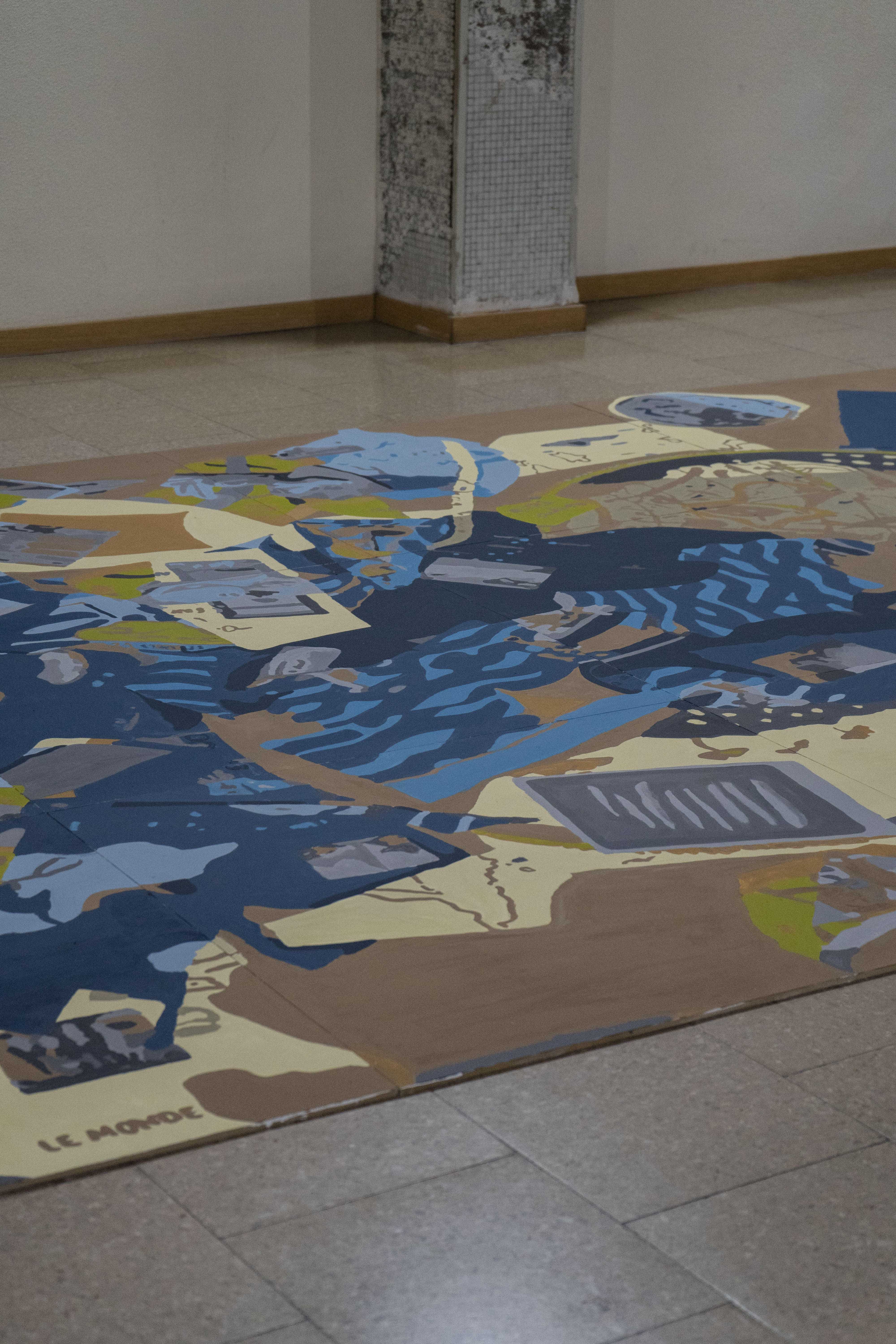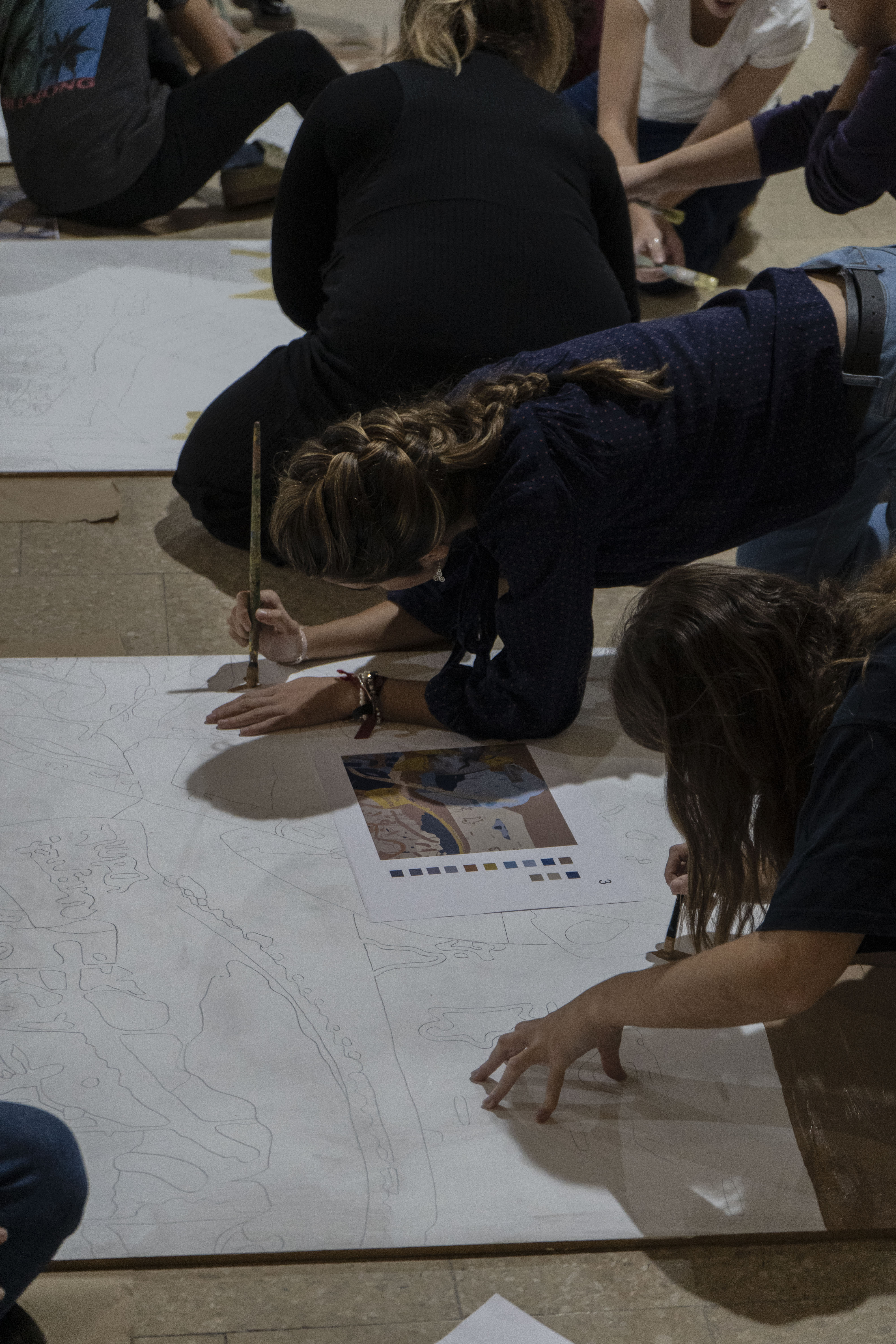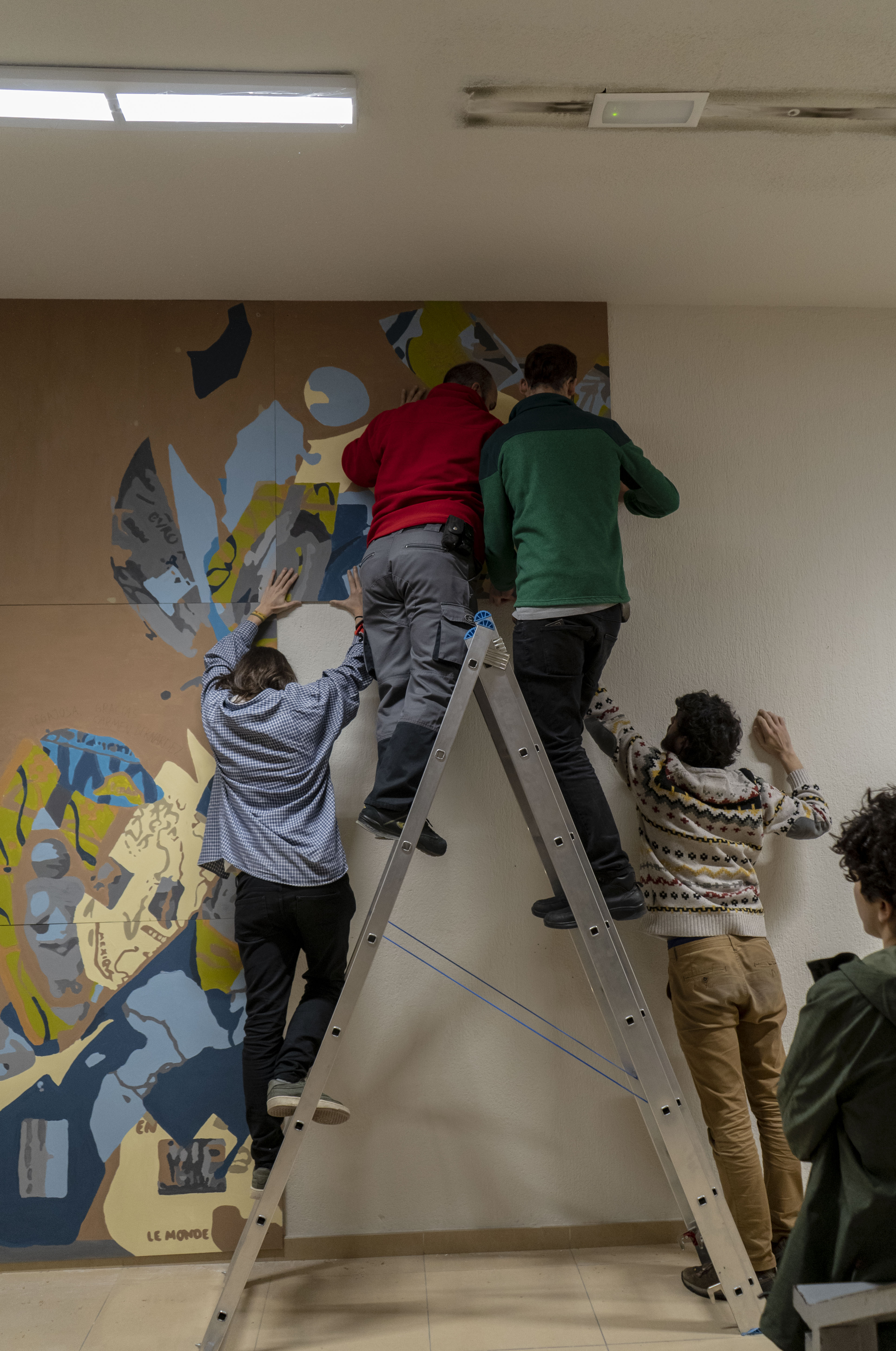Hacer un mural para derribar muros
Taller-dinámica en colaboración con Espacio Matrioska. Semana de la Ciencia 2018

Este proyecto creativo surge con la idea de trabajar una Historia del Arte inclusiva a partir de la creación de un nuevo concepto de mapa que abrace todas las culturas y modos de ver el mundo, de tal forma que,se identificaran narrativas temáticas transversales de la historia del arte que superaran de una u otra manera, el discurso meramente cronológico, geográfico, estilístico o étnico, entre otros.
Como punto de partida, este proyecto utilizó las plantillas de seis mapas de distintas épocas y culturas, que muestran el mundo de maneras muy diferentes:
- el realizado por Al-Idrisi en el s. XII como parte de la Tabula Rogeliana;
- el mapa de Heinrich Bünting de 1581 en forma de hoja de trébol y parte de una colección de xilografías que cartografían los viajes narrados en la Biblia;
- el falso mapa de Zheng He del siglo XVIII, copia de uno anterior, que representa el supuesto descubrimiento de América por los chinos;
- la obra Constelaciones de la artista Bouchra Khalili en la que aísla los itinerarios clandestinos de inmigrantes ilegales trazados sobre un mapa político para convertirlos en mapas celestes;
- el mapa titulado “El mundo en tiempo de los surrealistas” publicado en la revista Varietés en 1929, donde la metamorfoseada geografía refleja la ideología y compromisos políticos del grupo;
- y, finalmente, un mandala jainista, representación cósmica e instrumento efímero de ritual, perteneciente a la colección Antoni Tapiès.
This creative project arises with the idea of working about an inclusive art history from the creation of a new concept of the world´s map, which embraces all cultures and ways of seeing the Earth. In this way the thematic narratives characteristic of art history are identified in a transversal way while overcoming, in one way or another, the purely chronological, geographical, stylistic or ethnic discourse, among others.
As a starting point, this project used the templates of six maps of different eras and cultures, which show the world in very different ways:
- The one made by Al-Idrisi in the 12th century, as part of the Rogelian Tabula.
- Heinrich Bünting's map of 1581 in the form of a clover leaf, and part of a collection of woodcuts that map the journeys narrated in the Bible.
- The false map of Zheng He of the eighteenth century, a copy of a previous one THAT represents the supposed discovery of America by the Chinese.
- The work Constellations by the artist Bouchra Khalili, in which she isolates the clandestine itineraries of illegal immigrants drawn on a political map, in order to turn them into celestial maps.
- The map entitled "The world in the surrealist´s time " published in the magazine Varietés in 1929, where the metamorphosed geography reflects the ideology and political commitments of the group.
- And, finally, a Jain mandala, a representation of the Universe and ephemeral ritual instrument, belonging to the Antoni Tapiès collection.

En base a cada uno de estos mapas, los estudiantes del grupo C de la asignatura del Arte de India discurrieron por grupos aquellas obras de arte que representasen de mejor forma el mundo alternativo que se quería reflejar, e insertándolas en cada mapa a modo de primer collage.
Working over these cartographies as points of departure, the students were organised in groups in order to go through the main ideas and works of art that could best represent the “alternative worlds” that were reflected in each one of these maps, while sticking these works of art over the surface of each map as a sort of first collage.
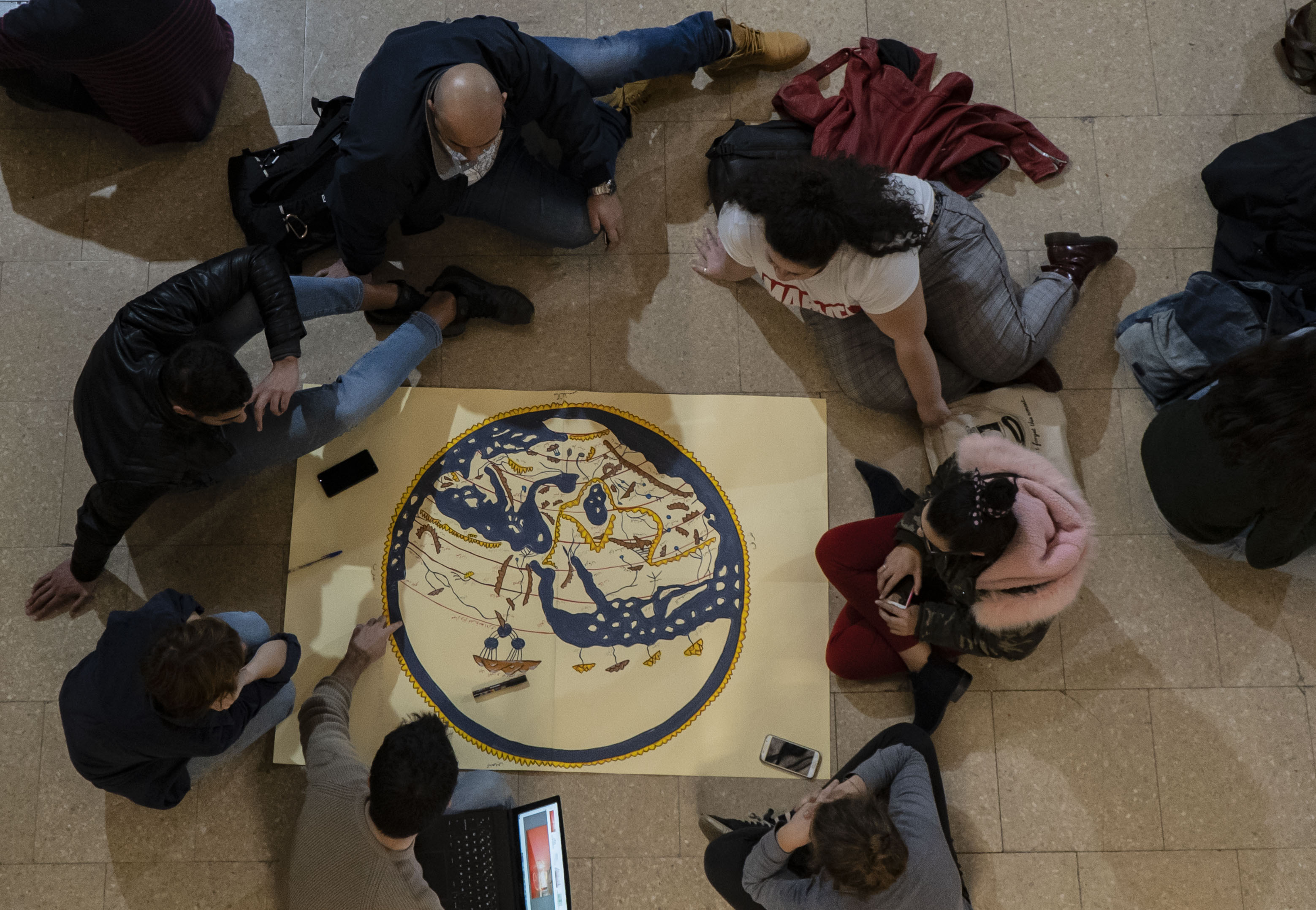
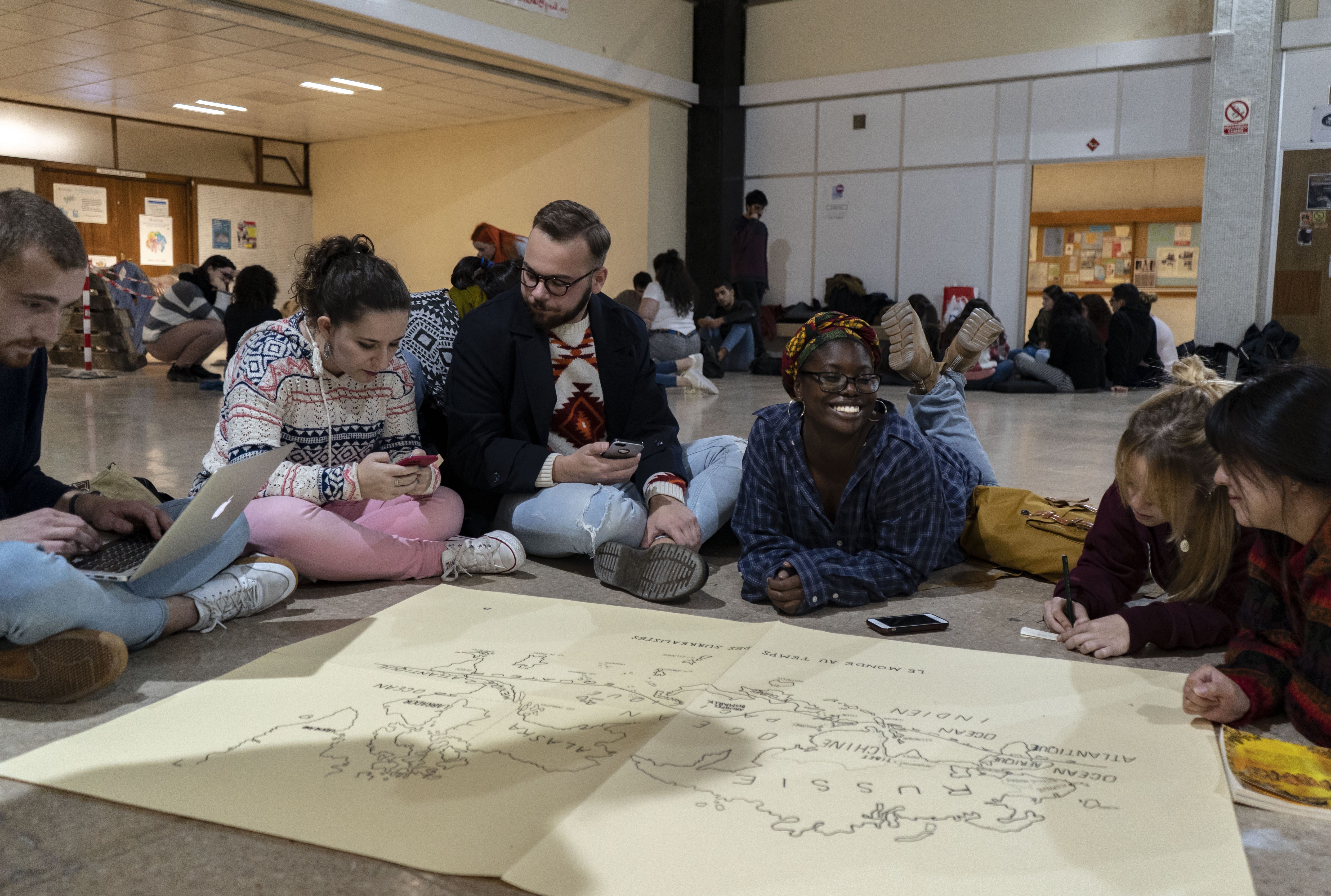
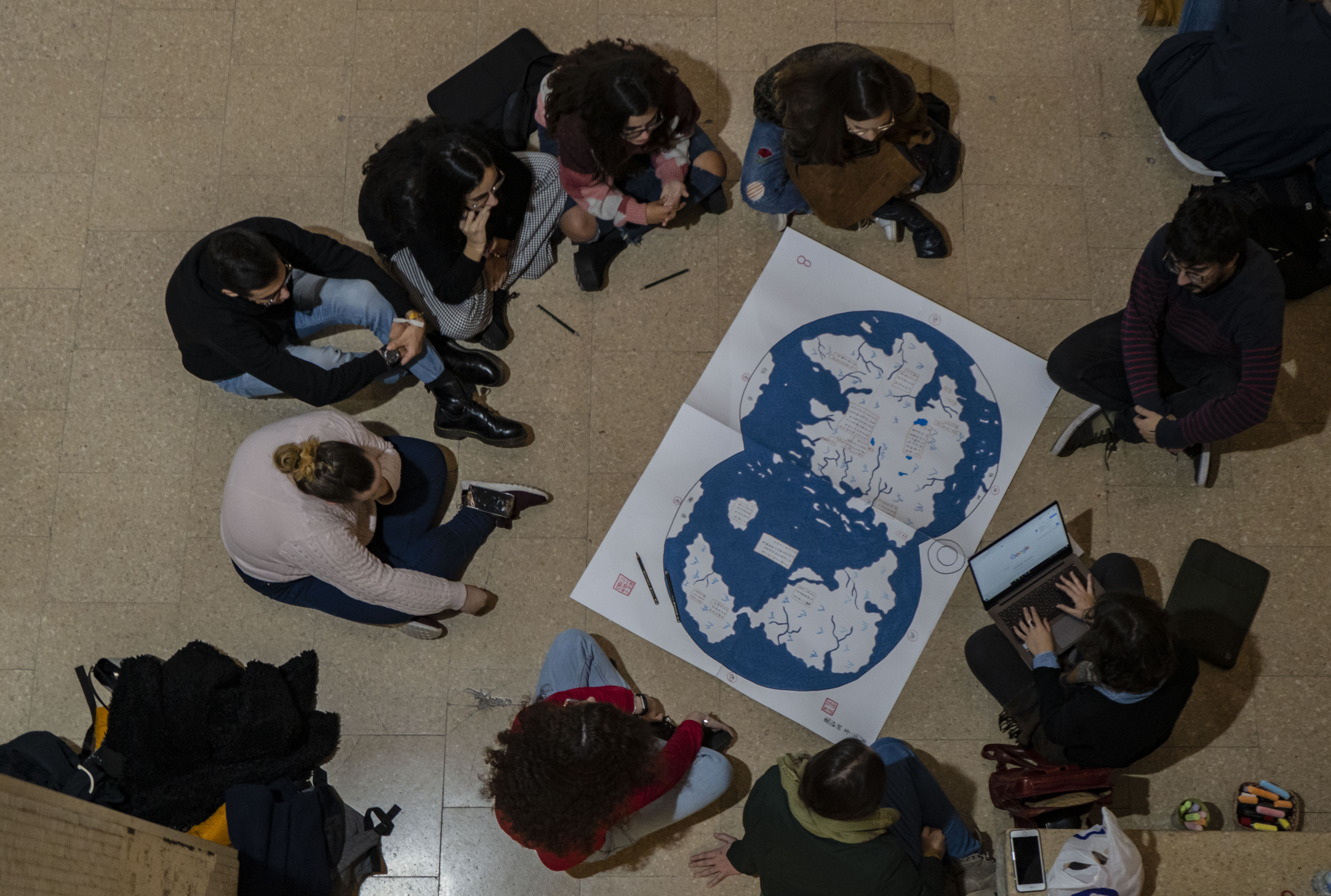
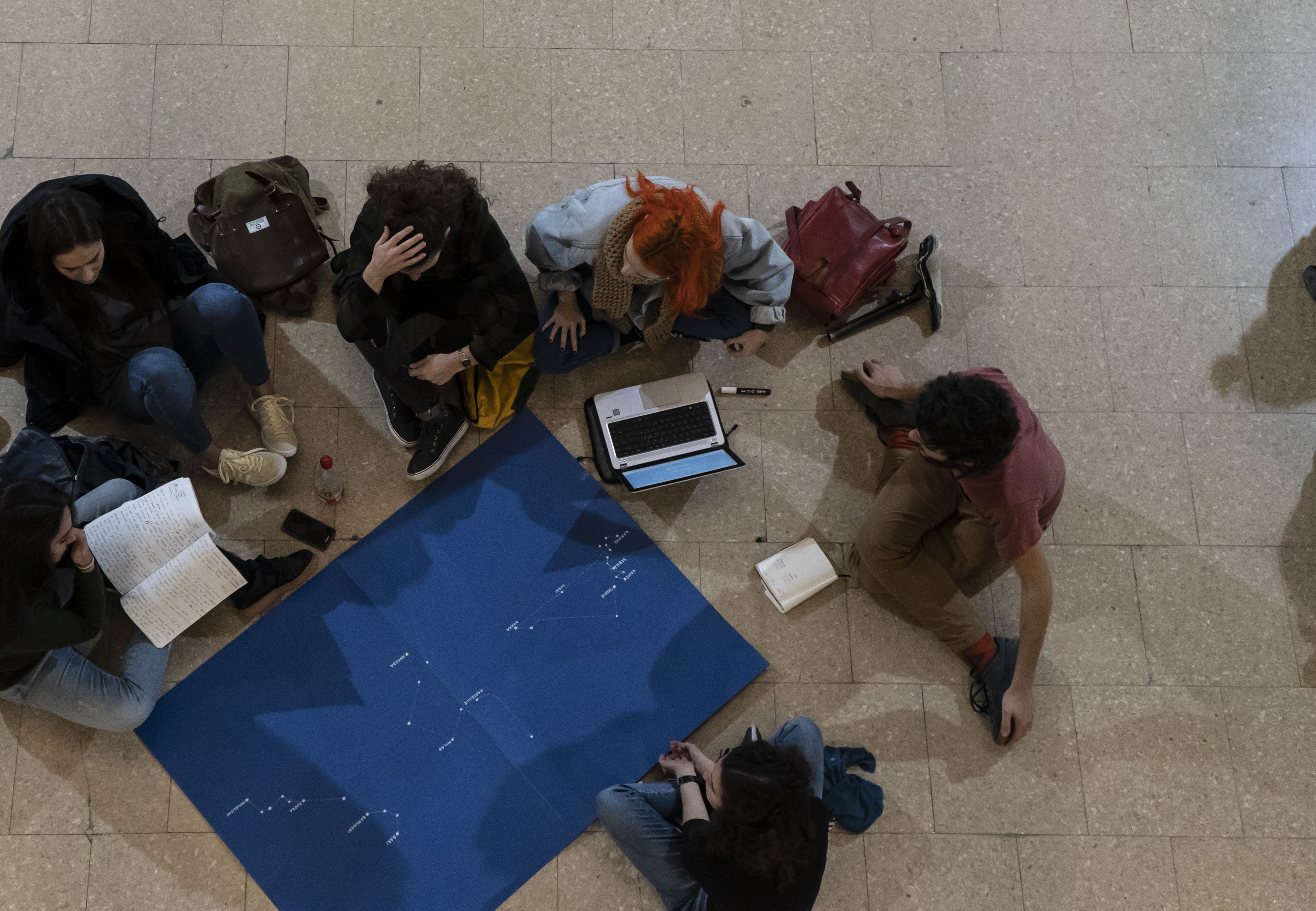
En un tercer estadio, y mediante la puesta en común de las ideas de todo el grupo en general, los alumnos se dedicaron a romper y fragmentar estas narrativas simbólicas, para volver a combinarlas de forma aleatoria. Dando lugar a un inmenso collage que, de manera coherente y a través del diálogo, debía cristalizar en el boceto del mural.
A partir de la construcción y deconstrucción de las posibles historias del arte y la búsqueda de elementos comunes entre las mismas, se utilizó el azul del cielo y el mar presente en los distintos mapas como elemento unificador. De alguna manera, este azul simbolizaba los viajes reales y metafóricos que atravesaban las obras, el arte y sus historias, el necesario fluir de una narrativa inclusiva y la transversalidad y pluralidad de la misma.
In a third stage, and sharing the ideas of the whole group in general, the students devoted themselves to break and fragment these symbolic narratives, to combine them again in a random way. This process resulted in an immense collage that, in further stages, will be crystallized in the final sketch of the mural realised by Matrioska´s collective of artists.
From the construction and deconstruction of the multiple art histories and the search for common elements among them, the blue colour characteristic of both skies and seas was used as a perfect nexus for the connexion of these different lands. In some way, this blue symbolized the real and metaphorical journeys that crossed the works, the art and its stories, the need of an inclusive narrative, and the transversality and plurality of it.


El trabajo en equipo, el consenso y el diálogo, el encuentro de historiadores y artistas, la reflexión desde y sobre las obras, la experimentación y la huella física del pincel fueron los medios para realizar este mural, que no es sino una manera más de contar y hacer historia del arte.
Teamwork, consensus and dialogue, the collaboration between art historians and artists, the reflection from and about the works, the experimentation and the physical imprint of the brush, were the means to realize this particularly special mural of the world which represents, nothing more, but one more way of making and recounting our history of art.
